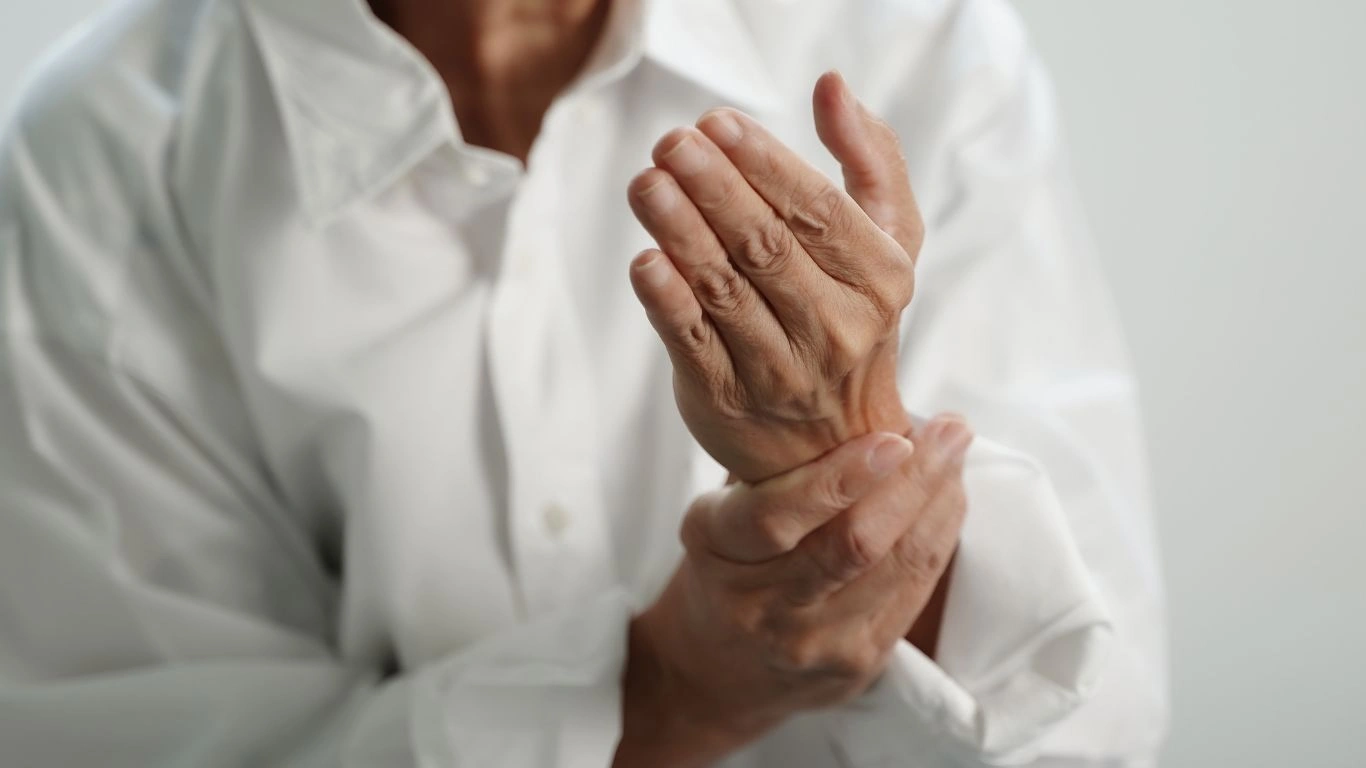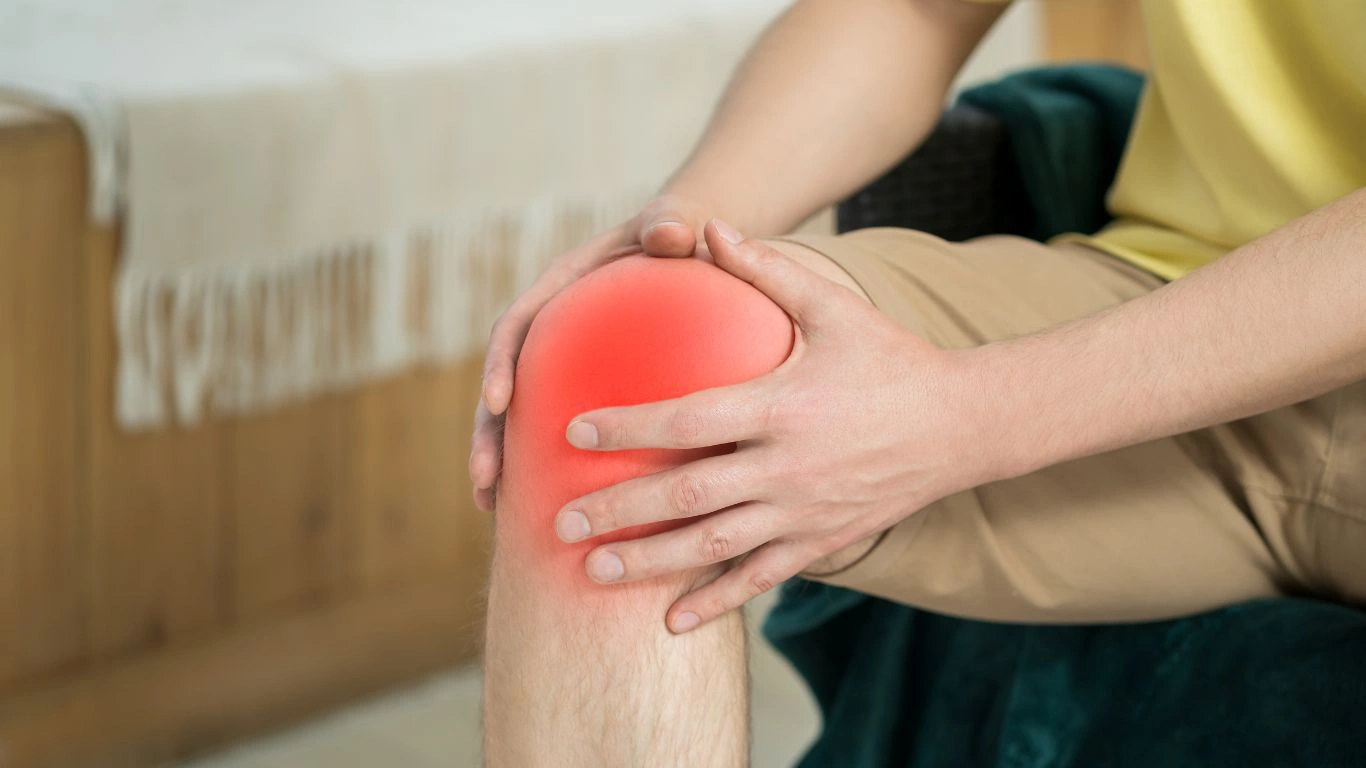The Impact of Caffeine on Rheumatoid Arthritis: What You Need to Know
As a Rheumatology Nurse Practitioner, I’ve seen firsthand the many challenges that come with managing rheumatoid arthritis (RA). One question that often arises among patients is how their daily habits, like drinking coffee, might affect their joints. This is especially common when discussing the impact of caffeine on the body. If you’ve ever wondered whether that morning cup of coffee is helping or harming your RA symptoms, you’re not alone. Let’s dive into the science behind caffeine and rheumatoid arthritis, and see if your favorite beverage could be contributing to your joint pain.
The Link Between Rheumatoid Arthritis and Lifestyle Choices
Living with rheumatoid arthritis means you’re always on the lookout for things that might trigger flare-ups or exacerbate symptoms. In my experience, lifestyle choices play a significant role in the management of RA. Beyond the medication, diet, and exercise, even seemingly small daily habits can influence how you feel. So, it makes sense to ask whether caffeine, a widely consumed stimulant, might be one of those habits worth evaluating.
When it comes to RA, managing inflammation is key. Since caffeine is a well-known stimulant, it’s natural to wonder if it could either increase or reduce inflammation in the body. Some studies suggest that caffeine might increase inflammation, while others show little to no impact. So, what does the science say, and how can you make an informed decision about whether to include caffeine in your routine?

Understanding Caffeine’s Impact on Inflammation
Caffeine has a complex relationship with inflammation in the body. For years, researchers have debated its effects, particularly when it comes to inflammatory conditions like rheumatoid arthritis. Some studies suggest that caffeine may contribute to higher levels of inflammatory markers, which could, in theory, worsen RA symptoms. However, other research shows that the effects of caffeine might vary from person to person, and in some cases, it might even provide anti-inflammatory benefits.
In my clinical experience, I’ve noticed that the impact of caffeine on RA symptoms can depend largely on individual factors such as genetics, overall health, and the severity of the condition. So, what exactly is happening at a biochemical level when caffeine enters the body? Let’s break it down.
- Caffeine and the Immune System: Caffeine can influence the immune system by modulating the production of certain cytokines, which are molecules that play a key role in inflammation. In some people with RA, this could potentially increase inflammation, leading to more joint pain and stiffness.
- Caffeine’s Effect on Cortisol Levels: Cortisol is the body’s natural anti-inflammatory hormone. Caffeine has been shown to increase cortisol levels temporarily. While this might sound beneficial, chronic elevation of cortisol can have negative effects, such as weight gain, sleep disturbances, and, in some cases, worsened inflammation.
- Potential Anti-inflammatory Effects: On the flip side, there is also some evidence suggesting that caffeine might have an anti-inflammatory effect, especially when consumed in moderation. Some studies have shown that caffeine’s antioxidant properties could help reduce oxidative stress, a factor that contributes to inflammation in RA patients.

How Caffeine Affects Your Joints
Now that we understand the general impact of caffeine on inflammation, it’s important to zoom in on how this affects the joints, particularly in individuals with rheumatoid arthritis. Joint pain and stiffness are hallmark symptoms of RA, and even small changes in daily habits can make a big difference in how well your joints feel.
From a clinical perspective, it’s crucial to look at the broader picture of how caffeine fits into your lifestyle. Is it contributing to your joint pain or is it helping you stay more active? Here are a few ways caffeine might impact your joints:
- Dehydration: One of the biggest concerns I have with caffeine consumption is its diuretic effect. Caffeine can increase urination, which can lead to dehydration if you don’t compensate by drinking enough water. Dehydration can worsen joint stiffness and pain, especially for RA patients who are already dealing with inflammation.
- Bone Health: Another factor to consider is caffeine’s potential impact on bone health. Some studies have suggested that high caffeine intake might interfere with calcium absorption, which can lead to weaker bones over time. For RA patients, who may already be at risk for osteoporosis, this could be a concern.
- Sleep Disruptions: Caffeine’s stimulating effects can also interfere with sleep, and as anyone living with RA knows, good quality sleep is crucial for managing pain. Poor sleep can increase inflammation and reduce the body’s ability to repair itself, which could make joint pain worse.

The Role of Coffee in Your Daily Routine
As I’ve mentioned before, caffeine affects everyone differently, so it’s important to listen to your body. Many of my RA patients have found that moderate coffee consumption doesn’t seem to worsen their symptoms, while others notice a significant increase in pain and stiffness after just one cup. It all comes down to how your body reacts to caffeine.
In general, I recommend keeping track of your caffeine intake and monitoring how your joints feel afterward. If you notice any increased pain, try reducing your caffeine consumption or switching to beverages with less caffeine, like green tea. You might also consider drinking more water throughout the day to combat dehydration.
Overall, it’s about finding balance. You don’t have to give up your favorite coffee altogether, but being mindful of how it impacts your RA symptoms is key to managing your condition effectively.
Moderation is Key: How Much Caffeine is Safe for RA Patients?
As we discussed earlier, the effects of caffeine on rheumatoid arthritis (RA) vary greatly from person to person. It’s clear that for some, caffeine can aggravate symptoms, while for others, it might not have much of an impact at all. The key to incorporating caffeine into your routine lies in moderation—understanding how much is too much and how your body responds to different amounts.
In my experience working with RA patients, most people find that small amounts of caffeine don’t significantly affect their joint health. In fact, a cup of coffee here and there might even offer some positive effects, like a boost of energy or improved mental clarity. However, the trouble often arises when caffeine intake becomes excessive. So, how much caffeine is too much when you have rheumatoid arthritis?
The Recommended Limits of Caffeine Consumption
For most people, up to 400 milligrams of caffeine per day (about four 8-ounce cups of coffee) is considered safe. But when you’re living with RA, the picture becomes a bit more complex. While the general guidelines for caffeine intake are helpful, it’s important to keep in mind that each person with RA is unique. Some individuals may experience a flare-up with just a single cup of coffee, while others can tolerate more.
It’s also worth considering your overall caffeine sources. Many people don’t just drink coffee—they also consume tea, sodas, or energy drinks throughout the day. Adding up your total caffeine intake is an important step in understanding how it’s affecting you. If you find that your joints feel stiffer or your pain worsens after consuming caffeine, it may be time to cut back.

Signs That Caffeine May Be Aggravating Your RA Symptoms
It’s often difficult to pinpoint whether caffeine is directly affecting your joints because other factors—like stress or changes in medication—could also be contributing to your symptoms. However, if you suspect caffeine is playing a role, there are a few signs you can watch out for:
- Increased joint stiffness: If you notice that your joints feel stiffer than usual after drinking coffee or other caffeinated beverages, this might be a sign that caffeine is irritating your inflammation.
- More pain during flare-ups: Some of my patients have noticed that their pain is more intense on days when they consume caffeine. While this isn’t always the case, it can be helpful to track your caffeine intake and joint pain levels over time.
- Sleep disturbances: We’ve already discussed how caffeine can interfere with sleep, but it’s worth repeating—RA patients need quality rest to manage inflammation. If your caffeine consumption is keeping you up at night, your pain might be worse the next day.
- Increased anxiety: Caffeine can also have a stimulating effect on your nervous system, which could exacerbate feelings of anxiety. Increased anxiety can make it more difficult to relax and manage RA symptoms effectively.
Alternatives to Coffee for RA Patients
For those who love the ritual of drinking coffee but want to avoid the potential negative impacts on their joints, the good news is that there are plenty of caffeine-free alternatives to explore. As a Rheumatology Nurse Practitioner, I’ve recommended several options to my patients, and many of them have found relief by switching to these alternatives:
Herbal Teas
Herbal teas are a great option for those who want to avoid caffeine but still enjoy a warm, soothing beverage. Some herbal teas, such as ginger or turmeric tea, are also known for their anti-inflammatory properties. Since inflammation is a primary concern for those with RA, these teas can be a natural way to complement your treatment plan.
Ginger, in particular, has been studied for its potential to reduce inflammation and help manage pain in people with RA. Similarly, turmeric contains curcumin, a compound that has been shown to have anti-inflammatory effects. Incorporating these teas into your daily routine can provide comfort without the risks associated with caffeine.

Decaffeinated Coffee
If you’re really attached to the taste of coffee but want to cut out the caffeine, decaf coffee can be a great middle ground. While it’s not entirely caffeine-free, decaf contains much less caffeine than regular coffee, typically about 2-5 milligrams per 8-ounce cup. For those who have an intense love for coffee but experience joint issues when consuming it, switching to decaf might help you maintain the experience without triggering symptoms.
It’s important to note that even decaf coffee contains small amounts of caffeine, which might still affect some people with RA. However, many find that the reduced caffeine content doesn’t lead to the same issues as regular coffee.
Green Tea
Another great option is green tea. It contains less caffeine than regular coffee, but it also comes with numerous health benefits. Green tea is packed with antioxidants and polyphenols, which have been shown to have anti-inflammatory effects. The best part is that you can enjoy a hot beverage that provides a gentle caffeine boost without overloading your system.
Green tea is also linked to improved cardiovascular health, and research suggests it might even support joint health. If you’re not a fan of its taste, try adding a little honey or lemon to make it more palatable. It’s a simple, refreshing way to enjoy a warm drink without the side effects of coffee.

Creating a Personalized Plan: Finding What Works for You
Ultimately, the best approach when it comes to caffeine and rheumatoid arthritis is a personalized one. There is no one-size-fits-all answer, and what works for one person may not work for another. In my practice, I always encourage my patients to listen to their bodies and track their symptoms. Keep a journal of your caffeine intake and how your joints feel afterward—this can help you spot patterns and make informed decisions about how to adjust your routine.
Remember, managing RA is about finding the right balance between medication, lifestyle changes, and self-care practices. Whether you choose to reduce caffeine, switch to decaf, or try herbal teas, the key is to stay proactive in understanding how different factors impact your condition. By experimenting with your habits and adjusting them accordingly, you can find what works best for your joints and overall health.
Managing Rheumatoid Arthritis: Lifestyle Changes Beyond Caffeine
When it comes to managing rheumatoid arthritis (RA), there’s no magic bullet. While cutting back on caffeine might make a difference for some, it’s only one piece of the puzzle. As I’ve worked with countless RA patients, I’ve learned that the most effective way to manage the disease is through a holistic approach—balancing medication, lifestyle changes, and natural remedies. In this section, we’ll explore other lifestyle factors that can help reduce inflammation, ease joint pain, and improve overall well-being.
Diet and Its Impact on Rheumatoid Arthritis
One of the first things I always address with my RA patients is their diet. What you eat can play a huge role in how you feel. Inflammation is at the root of RA, and certain foods are known to either trigger or reduce this inflammatory response. Incorporating anti-inflammatory foods into your diet can help manage symptoms and support your overall health.
Many of my patients have found relief by shifting their diets to include more whole, nutrient-dense foods. Foods rich in antioxidants, omega-3 fatty acids, and fiber can help reduce inflammation and support joint health. Here are a few key foods to consider adding to your meals:
- Fatty Fish: Fish like salmon, mackerel, and sardines are rich in omega-3 fatty acids, which have been shown to reduce inflammation in the body. Omega-3s also promote heart health, which is important for RA patients since they may have an increased risk of cardiovascular disease.
- Berries: Berries, such as blueberries, strawberries, and raspberries, are packed with antioxidants that fight inflammation. The polyphenols found in berries have been linked to reduced symptoms in people with RA.
- Leafy Greens: Dark, leafy greens like spinach, kale, and broccoli are excellent sources of vitamins, minerals, and fiber, all of which can help support immune function and reduce inflammation.
- Olive Oil: Extra virgin olive oil contains oleocanthal, a compound that has anti-inflammatory properties similar to ibuprofen. Adding olive oil to your salads or using it for cooking can provide a natural way to fight inflammation.

On the flip side, there are certain foods that RA patients should consider limiting or avoiding. These include:
- Processed Foods: Highly processed foods that are high in sugar, unhealthy fats, and refined carbohydrates can contribute to inflammation and worsen RA symptoms. Cutting back on processed snacks, sugary drinks, and fast food is an essential step in managing the disease.
- Red Meat: While not all meats are problematic, red meat, especially processed versions like bacon and sausage, can increase inflammation. Opting for leaner proteins like chicken or plant-based sources can be a better option for reducing inflammation.
- Dairy: Some RA patients find that dairy products can exacerbate symptoms, particularly if they have sensitivities to lactose or casein. It might be worth experimenting with dairy-free alternatives to see if it helps improve joint health.
Exercise: Keeping Your Joints Active and Healthy
Regular exercise is another cornerstone of managing rheumatoid arthritis. While it might seem counterintuitive to work out when your joints are already stiff or painful, staying active is actually one of the best ways to improve mobility and reduce pain. In fact, physical activity helps strengthen the muscles surrounding the joints, which can alleviate stress on the joints themselves.
Low-impact exercises are typically best for RA patients, as they minimize strain on the joints. Activities like swimming, cycling, and walking are excellent choices. These exercises improve joint flexibility, increase circulation, and boost overall energy levels. Even gentle stretching and yoga can be helpful in maintaining flexibility and preventing stiffness.
Of course, it’s important to listen to your body. If you’re experiencing a flare-up or acute pain, it’s okay to take a break or modify your exercise routine. I always recommend consulting with a physical therapist or healthcare provider to create a personalized exercise plan that fits your needs and limitations.
The Importance of Rest and Stress Management
While exercise is vital, rest is equally important. Overexerting yourself can lead to exhaustion and increased inflammation, so it’s crucial to find a balance between activity and rest. RA patients often struggle with fatigue, so taking regular breaks and getting plenty of sleep is essential to managing your symptoms.
In addition to physical rest, mental rest is also crucial. Stress can exacerbate inflammation and trigger flare-ups, so finding ways to manage stress is key to living well with RA. Practices like meditation, deep breathing, and mindfulness can help reduce stress levels and improve emotional well-being. Many RA patients find that incorporating relaxation techniques into their daily routines can make a big difference in how they feel both physically and mentally.

Medications: A Crucial Part of RA Management
While lifestyle changes like diet, exercise, and stress management can significantly improve quality of life, medications are still a cornerstone of rheumatoid arthritis treatment. There are various types of medications available, ranging from nonsteroidal anti-inflammatory drugs (NSAIDs) to disease-modifying antirheumatic drugs (DMARDs). In some cases, biologic medications are also prescribed to target specific parts of the immune system that contribute to RA symptoms.
As someone who works closely with RA patients, I can’t stress enough how important it is to follow your prescribed medication regimen. These medications are designed to help control inflammation, prevent joint damage, and manage pain. If you feel that your current treatment plan isn’t working as well as it should, it’s essential to talk to your healthcare provider to explore alternative options.
It’s also worth mentioning that medications should never be relied upon as the sole treatment. They work best when combined with lifestyle changes, such as improving your diet, staying active, and managing stress. Together, these strategies can provide a comprehensive approach to living with rheumatoid arthritis.
References
Disclaimer
The information provided in this article is for educational purposes only and is not intended as medical advice. Always consult with your healthcare provider before making any changes to your treatment plan or lifestyle. Each individual’s experience with rheumatoid arthritis is unique, and what works for one person may not work for another. The author is a Rheumatology Nurse Practitioner with personal experience working with RA patients, but the views expressed are based on professional knowledge and general research.

Tarra Nugroho is a dedicated Nurse Practitioner with a strong foundation in family and preventive care. She brings both compassion and clinical expertise to her practice, focusing on patient-centered care and health education. As a contributor to Healthusias.com, Tarra translates medical knowledge into clear, empowering articles on topics like women’s health, chronic disease management, and lifestyle medicine. Her mission is simple: help people feel seen, heard, and informed—both in the clinic and through the content she creates. When she’s not caring for patients, Tarra enjoys weekend hikes, plant-based cooking, and curling up with a good health podcast.






